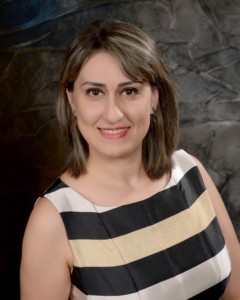PRAIRIE VIEW, Texas (June 23, 2021) – In recent years, genomic research, or the study of a cell or organism’s complete set of genes, has progressed tremendously. Many diseases are actually genetic disorders, and understanding their behavior requires a deeper understanding of our own genome. A genome contains all of the information needed to build an organism and allow it to grow and develop. To that end, scientists with different expertise are working together to tackle obstacles in curing genetic diseases.
Prairie View A&M University (PVAMU) Professor Noushin Ghaffari, Ph.D., recently published a significant work of research that has broad implications for understanding illnesses like autism, schizophrenia, cardiovascular disease and Huntington’s disease. “A Robust Benchmark for Detection of Germline Large Deletions and Insertions” appears in the prestigious magazine Nature Biotechnology. Ghaffari worked on the research through a collaboration with the Genome in a Bottle Consortium (GIAB).
“I have been collaborating with a national consortium called Genome in a Bottle for a few years,” Ghaffari said. “The GIAB is led by Dr. Justin Zook from the National Institute of Standards and Technology (NIST), a public-private consortium that generates reference material for the human genome. I met Dr. Zook and his colleague, Dr. Mark Salit, at a conference in 2016, and I was fascinated by the scope and purpose of the work. I have been collaborating with the consortium ever since.”
Ghaffari and the team’s new research helps physicians and researchers compare genetic material from patients to discover underlying diseases.
“Our benchmark [structural variation] set serves as the reference material that can be compared with newly acquired samples from patients,” she said. “We employed many different technologies that generate molecule-level information about genomes.”
Researchers from across the nation collaborated in different aspects of the project to form an invaluable resource for the scientific community. This work will not only benefit patients, but it is also a very important resource for researchers to learn more about the changes within human cells. With the availability of this important new resource, scientists can compare their standard variations with the GIAB reference material to identify positive or false-negative insertions or deletions in the human genome.
“I am looking forward to seeing many significant research outcomes generated by using this paper,” Ghaffari said.
At PVAMU since January 2020, Ghaffari is an assistant professor in the Department of Computer Science in the Roy G. Perry College of Engineering (COE). She teaches software engineering, computer science, discrete structures and introduction to algorithms and Java. Before arriving at PVAMU, Ghaffari was at Texas A&M AgriLife Research, part of the Texas A&M University System (TAMUS), for nearly ten years as a bioinformatics scientist. She was also affiliated with Texas A&M High-Performance Computing (HPRC) as a research scientist.
“The focus of my research is big data, data analytics, high-performance computing, computational biology and genomics,” she said. In addition to research, Ghaffari trains students to become successful data scientists in the fields of genomics, computational biology and bioinformatics.
“We are excited about the significant contributions that faculty in the Roy G. Perry College of Engineering, such as Dr. Ghaffari, are making to the national and global community,” said COE Dean Pamela Obiomon, Ph.D. “We’re also excited that our students have the unique opportunity to study and learn about these cutting-edge research areas to become future leaders.”
“Dr. Ghaffari’s research collaboration with the GIAB and the resulting genomic research outcomes are significant,” said Vice President of Research & Innovation Magesh Rajan, Ph.D. “I am pleased to see PVAMU research scholars, such as Dr. Ghaffari, publishing such significant research in prestigious journals such as Nature Biotechnology.”
Looking to the future, Ghaffari plans to continue her involvement with the GIAB consortium, as well as continuing to expand more collaborations with Sandia National Laboratory and Microsoft Corporation. She is grateful to be at PVAMU, where she is fully supported by other faculty and researchers to make a real difference in the future of computational biology.
“I received support from our department head, Dr. [Yonggao] Yang, and Dr. Obiomon since I joined PVAMU regarding my research projects,” she said. “I am looking forward to training students, conducting much more productive research and publishing articles to represent my beloved PVAMU well.”
-PVAMU-

